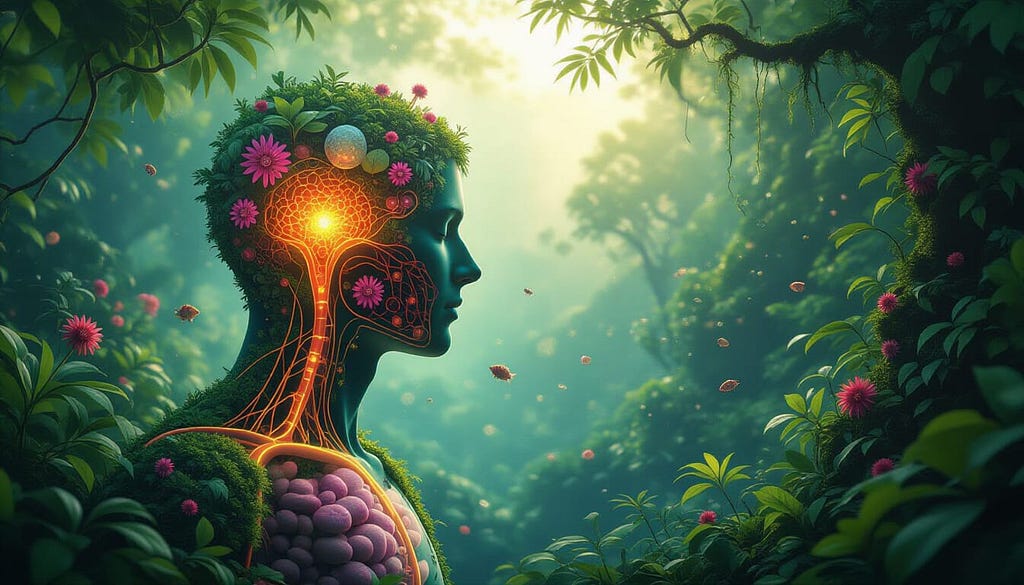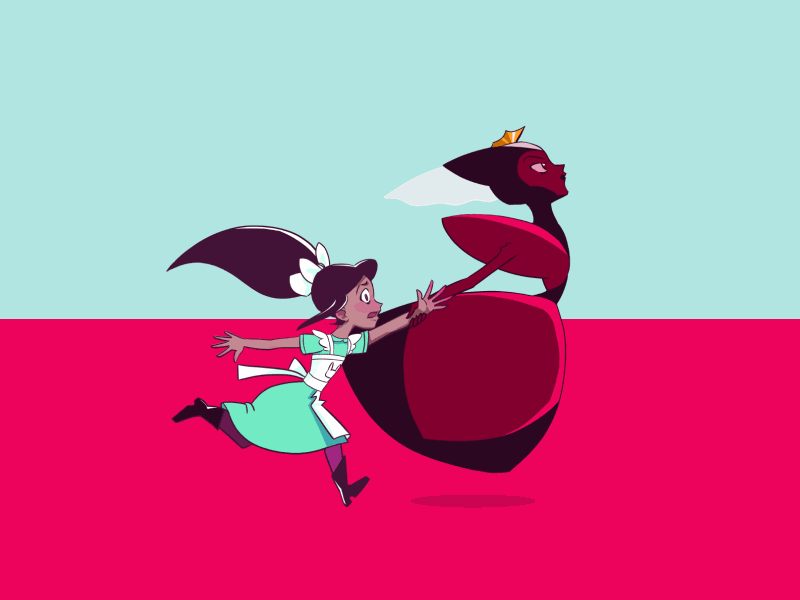“Competition and cooperation are not contraries. They have no opposite meaning. They are complimentary. In every aspect of life, we do both. Schools are highly cooperative endeavours within which scholars vigorously compete. The Olympic Games combine immense cooperation in structure and rules with intense competition in events. As the runners leap from the blocks, competition and cooperation are occurring in a single, indistinguishable blur. Every cell in our bodies vigorously competes for every atom of nutrient we swallow and every atom of oxygen we breathe, yet every cell can sense when the good of the whole requires they cooperate by relinquishing their demands when the need of other cells is greater. Life cannot reach its highest potential, in fact, cannot exist without a harmonious blend of competition and cooperation. […] Only in a harmonious, oscillating dance of both competition and cooperation can the extremes of control and chaos be avoided and peaceful, constructive societal order be found.” — Dee Hock, One from Many: VISA and the Rise of Chaordic Organization
In the late 19th century, two French scientists locked horns over what makes us sick. Louis Pasteur, famed for pioneering vaccines and germ theory, argued that disease comes from external invaders — microscopic germs that must be identified and defeated. His less-heralded contemporary, Antoine Béchamp, had a different view: germs were everywhere, he said, but they become dangerous only when the host’s internal environment — the “terrain” — is out of balance. In other words, it’s not just the bug, but the body (the surrounding conditions) that truly determines an illness.
Modern medicine ultimately sided with Pasteur’s germ theory, yet Béchamp’s perspective was not entirely misguided. The latest microbiome research recognizes that a healthy internal ecosystem (terrain) can keep potential pathogens in check. Germs are not the problem, we need them, homeostasis and balance between germs, parasites and bacteria is key. It turns out the heretical Béchamp was right after all. It is said that even Pasteur conceded on his deathbed “The microbe is nothing, the terrain is everything”, underscoring the crucial role of environment.
This Substack is reader-supported. To receive new posts and support my work, consider becoming a free or paid subscriber.
This 150-year-old debate is a powerful metaphor for business. In the corporate world, we often obsess over the “germs”: a disruptive competitor, a technological innovation, a sudden crisis. But perhaps the business ecosystem — the broader environment in which companies operate — is the “terrain” that truly allows success (or failure) to flourish. Do companies fail because of aggressive rivals (germs), or because their industry context and internal conditions (terrain) let those rivals overrun them? In this week’s Thursday Thought, we explore this question through a story and then an ecological lens on business dynamics. Inspired by our series with Robert Alexander Burgelman as part of our Joe Bower Tribute series, I was also influenced by studies of the microbiome and a forthcoming episode with Steven Gundry on “The Gut/Brain Paradox”.
Sun Tzu emphasized terrain’s decisive role in conflict, stating, “The natural formation of the country is the soldier’s best ally.” Just as terrain shapes military outcomes, business success is profoundly influenced by the broader industry landscape. Consider the automotive industry terrain in 2008 under the disruption of the financial crisis.
Bailing Out the Ecosystem (Terrain): Alan Mulally in the 2008 Crisis

“Should one of the other domestic companies declare bankruptcy, the effect on Ford’s production operations would be felt within days if not hours … Without parts for the just-in-time inventory system, Ford plants would not be able to produce vehicles.” — Alan Mulally
Detroit, 2008. The CEOs of the Big Three automakers sat before Congress amid the worst financial crisis in decades. General Motors and Chrysler were weeks away from collapse, begging for a federal bailout. In a twist nobody expected, Alan Mulally, then-CEO of Ford (the one Detroit automaker that wasn’t insolvent) spoke up to urge lawmakers to save his competitors. Ford had fortuitously financed itself earlier and didn’t need a rescue. So why would its chief executive support bailing out rival companies that had made strategic missteps?
Mulally understood the lesson of the terrain. If GM and Chrysler fell, they wouldn’t fall alone. Their demise would ripple through shared suppliers and dealers, threatening to “drag the entire country into a depression,” Mulally warned. The auto industry’s supply chain was so intertwined that a failure anywhere could collapse the whole ecosystem. In his testimony, he noted that the auto sector accounted for as much as 13% of U.S. GDP, and allowing it to go into free-fall was unthinkable. Mulally insistedthat shoring up the environment (terrain) was “the right thing for the industry, the right thing for the United States of America… I’d do the same thing today.”
Congress eventually agreed to loans and managed bankruptcies for GM and Chrysler. Ford got no direct bailout — and that turned out to be a blessing. By saving the industry’s terrain, Ford saved itself by saving the industry in which it thrived.
The collapse of key parts suppliers was averted, and with two main rivals in restructuring, Ford actually gained consumer goodwill. Within weeks of the intervention, 98% of Americans knew GM and Chrysler were bankrupt, and knew that Ford wasn’t — and over half said they’d consider a Ford for their next car. Ford’s sales and balance sheet improved as the ecosystem stabilized. This event is a striking illustration of ecosystem thinking.
Mulally looked beyond fighting germs (letting GM fail and grab its market share) and instead rescued the terrain (ensuring that the whole network survives, at least temporarily). It’s akin to a tree in a forest “advocating” for its neighboring trees during a drought, because it knows a fire that wipes out the forest will eventually consume every tree.
Contrast this with former McDonalds entrepreneur Ray Kroc’s Pasteur-esque approach: “When you see your competitor drowning, grab a fire hose and put it in his mouth.” Such aggressive tactics may win short-term battles but risk long-term ecosystem collapse. Mulally’s ecological perspective demonstrates the enduring value of nurturing the business terrain.
Organizational Ecology: Adaptation and Selection

Organizational ecology offers insight into business survival and adaptation. Initially, the theory argued that industry change occurs primarily through replacement and selection rather than adaptation. Incumbent companies fail due to inertia and new firms with better-adapted traits for the adapting environment emerge.
Over time, organizational ecology evolved to highlight internal ecological processes within established firms. This brings to mind Jack Welch’s famous quote: “If the rate of change on the outside exceeds the rate of change on the inside, the end is near.” As organizations mature, rigidity increases as they seek internal stability, reliability, and legitimacy. This, in turn, makes adaptation to external shifts challenging.
The Red Queen and Continuous Adaptation

“Organisms must constantly adapt and evolve to survive while pitted against ever-evolving opposing organisms in a constantly changing environment.” — Leigh Van Valen
Evolutionary biologist Leigh Van Valen introduced the Red Queen hypothesis, emphasizing that organisms must continually evolve — not merely to surpass rivals but simply to maintain their existing position amid ever-evolving competitors and environments. The metaphor originates from Lewis Carroll’s Through the Looking-Glass, where the Red Queen advises Alice: “It takes all the running you can do, to keep in the same place.”
This concept underscores the necessity of perpetual evolution and adaptation within organizations. Companies can’t afford to stand still; continuous internal evolution and strategic adaptability are vital just to maintain equilibrium in an ever-changing marketplace. Just as in nature, organizational survival isn’t a one-time achievement — it’s an ongoing pursuit, requiring constant attention to the business ecosystem (terrain).
Biological Terrain and Organizational Adaptation
Humans evolved alongside our gut microbiome, shaping our internal terrain to meet nutritional needs. Different animals have vastly different gut biomes based on varying diets. Tigers and wolves predominantly host meat-eating bacteria, while horses and cows host plant-digesting bacteria. Humans, as omnivores, ideally maintain a diverse gut biome equipped to digest both meats and vegetables.
Similarly, human populations developed dietary tolerances based on historical food availability. Anecdotally, people from the west of Ireland reportedly experience higher rates of lactose intolerance compared to those from the richer dairy-producing pastures of the east, reflecting adaptation to dietary conditions. In Italy, lactose intolerance varies significantly, reflecting regional dietary traditions and agricultural history. Alignment between internal conditions and external environments enhances resilience and health — be it biological or organizational.
Leaders today must see beyond immediate threats and adopt a terrain-based strategic approach:
- Are you obsessing over germs (short-term threats) or actively cultivating a resilient business terrain?
- Can collaboration — even with competitors — strengthen your ecosystem and ensure mutual survival?
- How robust is your organization’s terrain against future disruptions?
Sustainable success lies less in defeating isolated threats and more in nurturing a balanced, resilient ecosystem.
Indeed, terrain is everything.
For more on Organizational Ecology, check out the final in a 3-part episode with Robert Burgelman:
https://medium.com/media/f3e1c47e4dde12586320337e6a0e6a42/href
Healthy Terrain, Healthy Business: The Red Queen Hypothesis was originally published in The Thursday Thought on Medium, where people are continuing the conversation by highlighting and responding to this story.